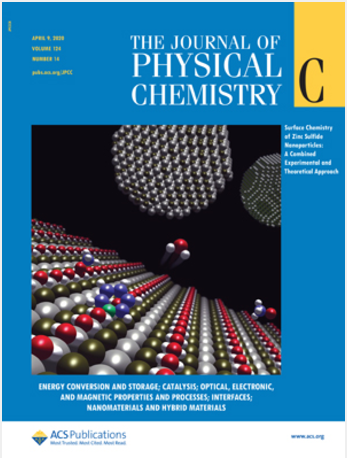Tail Group Engineering in Perfluorophenyl-Based Self-Assembled Monolayers
IF 3.3
3区 化学
Q2 CHEMISTRY, PHYSICAL
引用次数: 0
Abstract
We present a series of custom-designed, perfluorophenyl (PFP)-based molecular films on gold, in which the terminal PFP unit, coupled to the thiolate anchoring group via a cystamine linker (CA), is additionally decorated with various polar groups (R), such as −CF3, −SCF3, −CN, and −CH3. The basic characterization of the series with several complementary experimental tools shows that, on Au(111), the CA-R molecules form self-assembled monolayers (SAMs) with dense packing and high orientation. The structural parameters of these SAMs are nearly independent of R, implying that their work function (WF) can be exclusively associated with the identity of R. This was indeed the case, with the WF value varying from 5.5 to 5.6 eV for the electron-withdrawing −CF3 and −SCF3 groups to ∼4.9 eV for the electron-donating −CH3 group. Surprisingly, the CA-CN SAM, bearing electron-withdrawing nitrile groups, showed a similar work function as CA-CH3 – an effect that was observed earlier for other CN-terminated aromatic SAMs as well, and is tentatively explained by a redistribution of electron density due to the conjugation of the CN orbitals with the adjacent aromatic ring. This SAM features lower hydrophobicity than the other CA-R monolayers, which might be useful to provide a better match to a deposited organic material.

求助全文
约1分钟内获得全文
求助全文
来源期刊

The Journal of Physical Chemistry C
化学-材料科学:综合
CiteScore
6.50
自引率
8.10%
发文量
2047
审稿时长
1.8 months
期刊介绍:
The Journal of Physical Chemistry A/B/C is devoted to reporting new and original experimental and theoretical basic research of interest to physical chemists, biophysical chemists, and chemical physicists.
 求助内容:
求助内容: 应助结果提醒方式:
应助结果提醒方式:


